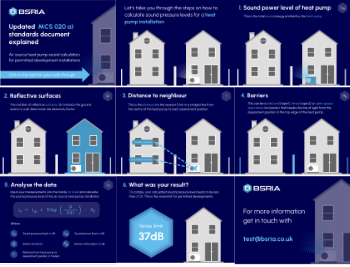Method of procedure
Contents[hide] |
[edit] Introduction
A method of procedure (MOP) is a detailed examination of the processes behind an operation. Examples of operations could include:
- Installing a new server in a data centre.
- Maintaining technical equipment in a laboratory.
- Breaking ground on a construction project.
In construction, a method of procedure is much like a construction management statement which ensures that possible impacts that may arise from the works have been appropriately identified, managed and minimised.
[edit] Components
The instructional sequence of a method of procedure provides precise step-by-step information for workers tasked with performing the action. The purpose is to control the outcome of the operation and reduce problems that may arise from guesswork or human error during the project. A method of procedure sets out to provide uniformity and accuracy while avoiding (or at least minimising) mistakes - no matter who handles the project.
A traditional method of procedure is a written document. Some methods of procedure are now available through computer software or cloud-based solutions.
Whether paper or computer based, the method of procedure should include fields and details that capture version control, author, date, tracking identification numbers and approval stamps or signatures (either digital or conventional).
A method of procedure not only includes the sequence of steps, but it also specifies tools, safety requirements and record keeping practices associated with the task. This protocol helps to reduce risk by creating processes that deliver predictable results.
For instance, a method of procedure can be given to personnel responsible for handling preventive maintenance tasks. The instructions will provide the worker with the required sequence of actions along with anticipated corresponding outcomes for verification. If an unexpected incident occurs, the worker will make a record of the event. Additional analysis of the incident may justify its inclusion in a revised method of procedure.
[edit] Templates for other processes
Once a method of procedure has been established, the process can be continually refined and improved. It can also be tested and used on new projects or suitable initiatives. For instance, the existing template could be applied to a proposed project to help shape it, and then a new method of procedure for that project could be tailored and refined.
By standardising processes (at least in their initial stages), a method of procedure creates a consistent protocol for all employees and processes throughout the organisation. It also helps prevent the introduction of initiatives that do not comply with existing methods of procedure.
On its own, a method of procedure (or several methods of procedure) can be incorporated into standard operating procedures (SOPs). Standard operating procedures are less specific and offer a more generalised overview of how workers should proceed. A method of procedure provides a breakdown of detailed steps for workers that must take place during the process.
[edit] Related articles on Designing Buildings Wiki
Featured articles and news
Gregor Harvie argues that AI is state-sanctioned theft of IP.
Heat pump and wind turbine sound calculations for PDRs
MCS publish updated sound calculation standards for permitted development installations.
Homes England creates largest housing-led site in the North
Successful, 34 hectare land acquisition with the residential allocation now completed.
Scottish apprenticeship training proposals
General support although better accountability and transparency is sought.
The history of building regulations
A story of belated action in response to crisis.
Moisture, fire safety and emerging trends in living walls
How wet is your wall?
Current policy explained and newly published consultation by the UK and Welsh Governments.
British architecture 1919–39. Book review.
Conservation of listed prefabs in Moseley.
Energy industry calls for urgent reform.
Heritage staff wellbeing at work survey.
A five minute introduction.
50th Golden anniversary ECA Edmundson apprentice award
Showcasing the very best electrotechnical and engineering services for half a century.
Welsh government consults on HRBs and reg changes
Seeking feedback on a new regulatory regime and a broad range of issues.
CIOB Client Guide (2nd edition) March 2025
Free download covering statutory dutyholder roles under the Building Safety Act and much more.
Minister quizzed, as responsibility transfers to MHCLG and BSR publishes new building control guidance.
UK environmental regulations reform 2025
Amid wider new approaches to ensure regulators and regulation support growth.
























